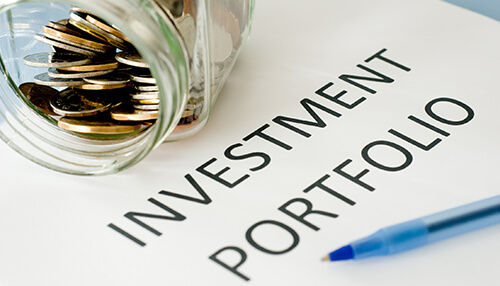Introduction
Before investing in a mutual fund, thoroughly read all offer documents as they are susceptible to market risk. This is the ideal method to inform you that mutual funds investments also have terms & conditions. As a result, everything you see in this statement.
Market risk and collective investment schemes go hand in hand, but did it stop you from participating? Yes! You have read it correctly. You need to create a plausible mutual fund portfolio in order to lower “market risk” and produce higher returns. In this article, we are going to talk about the eight steps to building an investment portfolio.
1. Measurement of the Time Horizon
Knowing your time horizon is the first step in building a successful investment portfolio. While defining your time horizon, we take into account these three things:
- Your years: When building your financial portfolio, how old were you?
- Time Until Retirement: How far or how soon are you from retiring?
- Your most crucial upcoming purchase is: what do you anticipate spending a big chunk of money on soon? For instance, are your liquidity needs?
These three elements might assist you in choosing your time frame.
2. Determine Your Style Of Investor: Varying From Traditional To Violent
Depending on an investor’s level of risk tolerance, we can divide their portfolios into three primary groups. Conservative, balanced, and growth (aggressive) are some of the top styles of investment. You can only start to determine the approach required to achieve your financial goals.
3. Evaluate Your Tolerance For Risk
Before choosing your first stock to purchase, you should consider asset allocation. We categorize financial assets on a scale from low risk to high risk.
- Low-Risk. Government bonds, corporate debt, certificates of deposit (CDs), and bank deposits are examples of low-risk assets.
- High-Risk. Mutual funds, REITS, and individual firm stocks are examples of high-risk investments. Here, you run the risk of losing your money because the fundamental asset prices are more unpredictable.
4. Decide on The Investing strategy
The next stage is to identify the precise shares of resources that would be in every asset category after you have determined how much of each you want to invest in.
At this point, a lot of novice investors choose to participate in actively managed funds or select individual bonds and stocks to represent each financial instrument. This type of investing is referred to as “active investing,” and it has a number of drawbacks.
5. Select ETFs And Passive Funds Products That Offer Exposure At A Cheap Cost
Use a passive investment strategy and concentrate on index funds rather than actively trading individual equities. Exchange-traded funds (ETFs) are index funds invested in a variety of investment securities, including equities, bonds, and REITs, and which follow the performance of an underlying instrument. Finding the right ETFs for your portfolio can be simplified by using an ETF finder, which allows you to filter based on asset type, risk, and cost.
6. Determine the appropriate investing asset types for you
Despite the differences between the three classes of investors, they make investments to varying degrees in two asset classes: LRLR assets and HRHR assets (for growth or for capital preservation).
7. Divide Holdings According To The Asset Class
The act of carrying out this “optimally” is a learning exercise that updates and expands on Modern Portfolio Theory’s Nobel Prize-winning research. Additionally, the type of investment portfolio will have an impact on this estimate.
8. Ensure That Your Assets Are Consistently Optimized By Rebalancing Your Portfolio
Your portfolio may become out of balance as the markets go up and down. Due to price increases, one asset class can exceed the designated percentage while another might fall short of it (due to a decrease in price).
Conclusion
Without the aid of a financial consultant, you can build your own mutual fund investments portfolio using the techniques above. Before investing in mutual fund investments, read thoroughly all of the forms of contracts as they are susceptible to market risk.



